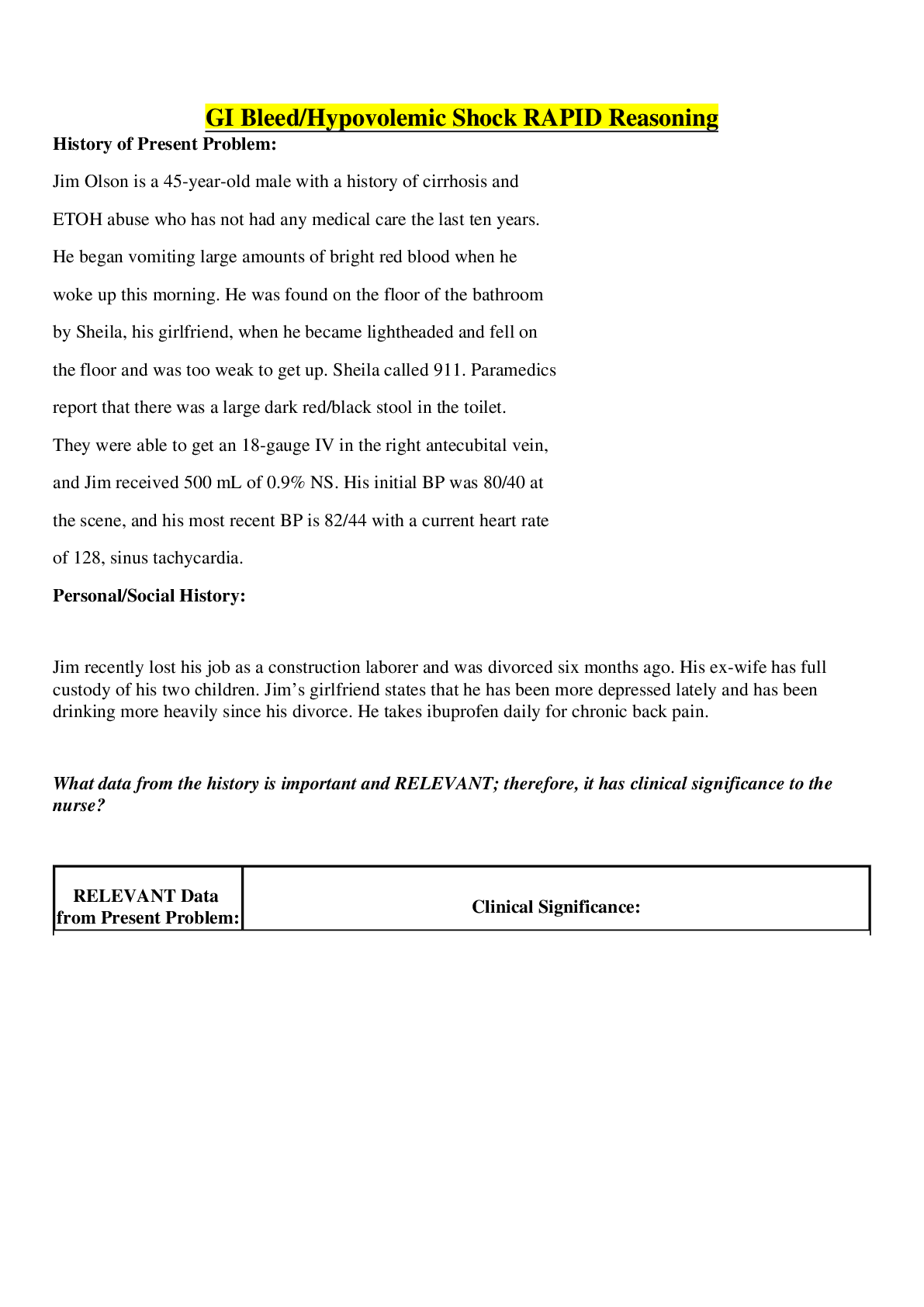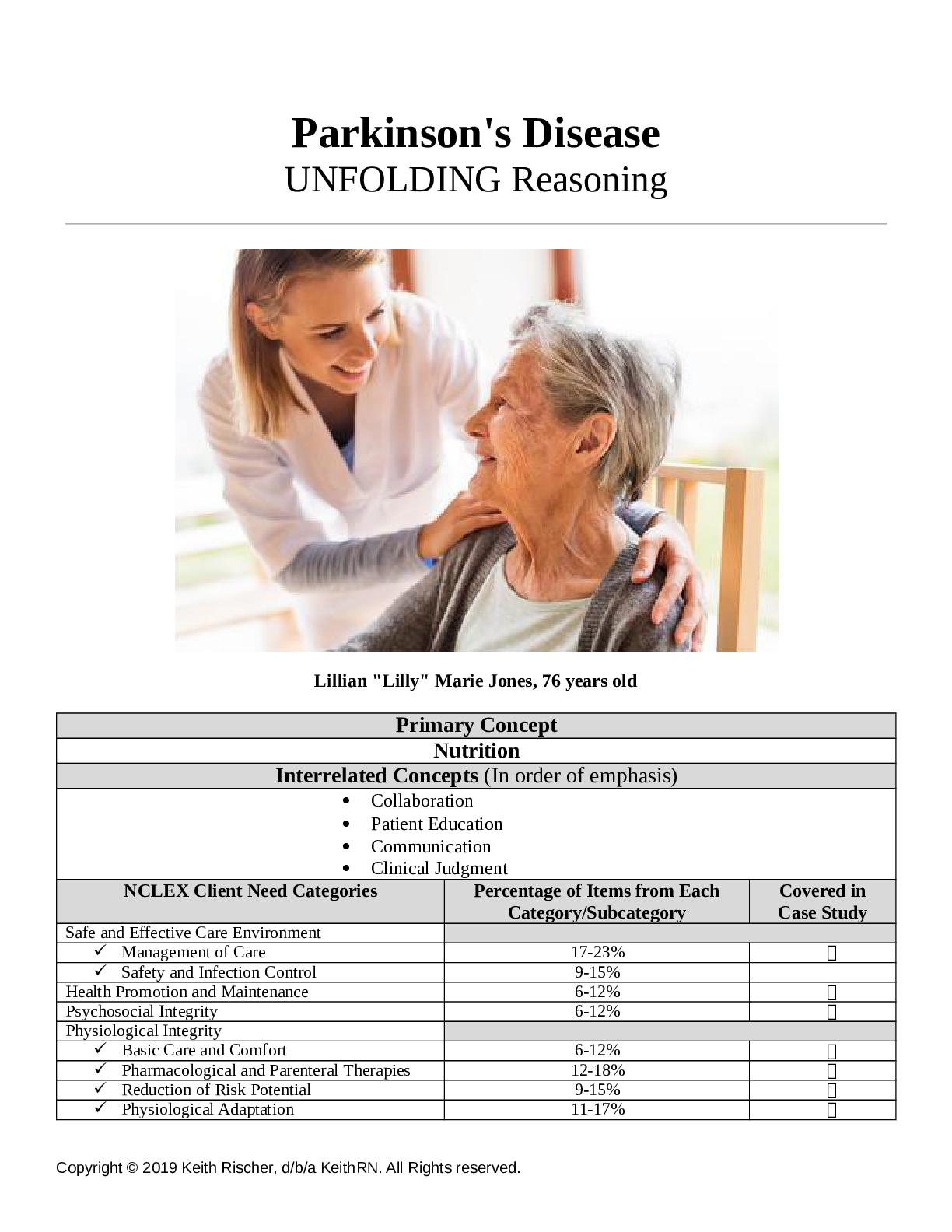*NURSING > CASE STUDY > Antepartum Unfolding Case Study - Anne Jones , 17 Years Old (All)
Antepartum Unfolding Case Study - Anne Jones , 17 Years Old
Document Content and Description Below
Antepartum Care UNFOLDING Reasoning Anne Jones, 17 years old Primary Concept Reproduction Interrelated Concepts (In order of emphasis) 1. Nutrition 2. Patient Education 3. Stress 4. Coping... 5. Clinical Judgment 6. Communication NCLEX Client Need Categories Percentage of Items from Each Category/Subcategory Covered in Case Study Safe and Effective Care Environment • Management of Care 17-23% • Safety and Infection Control 9-15% Health Promotion and Maintenance 6-12% Psychosocial Integrity 6-12% Physiological Integrity • Basic Care and Comfort 6-12% • Pharmacological and Parenteral Therapies 12-18% • Reduction of Risk Potential 9-15% • Physiological Adaptation 11-17% History of Present Problem: Anne Jones is a 17-year-old Caucasian teenager who thinks she may be pregnant because she has missed two periods. Her last menstrual period, she thinks, was about one month ago. She states she had a little bit of spotting last week but didn’t have a “full period”. She complains of her breasts being tender, swollen, frequent urination, and nausea in the morning. This is her first office visit and she is not sure why she feels so crummy but suspects she might be pregnant. Her urine pregnancy test is positive. Her primary care provider orders a prenatal lab panel and a urinalysis. Personal/Social History: Anne is a senior in high school who stands on her feet while working at McDonalds after school. She drinks six colas daily, denies alcohol use, and does not smoke. She takes no medications except for occasional acetaminophen for headaches and ibuprofen for menstrual cramps. Anne is 5’4” (160 cm) and weighs about 105 lbs. (47.7 kg) according to Anne. A 24-hour recall nutrition history reveals a typical day’s diet: breakfast- pop tart and can of cola; Lunch- a slice of pizza, chocolate chip cookie, can of cola; Dinner- fried chicken, green beans, biscuit, can of cola; snacks, including cookies and can of cola. She broke up last week with her boyfriend, and he is not aware she might be pregnant. She wants to keep the baby but has not told her parents. What data from the histories are RELEVANT and must be interpreted as clinically significant by the nurse? (Reduction of Risk Potential) RELEVANT Data from Present Problem: Clinical Significance: 1- LMP > 1 month ago, spotting a week ago, and positive urine pregnancy test 2- breast tenderness and swelling 3- frequent urination 4- stands on her feet while working at McDonald's 1- most common cause of secondary amenorrhea is pregnancy. Spotting can ocurr during first trimester, amount should be momitored, and pregnancy was confirmed by urine pregnancy test. 2- growth of breast tissue is normal during pregnancy and can cause discomfort. 3- frequent urination is a normal s/s of pregnancy due to pressure from fetus in the pelvic cavity 4- pregnancy increases edema which in her case can pool in lower extremities. Patient should be educated on interventions for lower edema managment such as compresion socks, low sodium diet modifications, elevation of feet, and s/s for DVT. RELEVANT Data from Social History: Clinical Significance: 1- Low BMI, 17 years of age, poor diet, nausea in the mornings, decreased appitite 2- Highschool senior 3 - Broke up with boyfriend who does not know she is pregnant and parents are unaware of the 1- pregnant females with low BMI and in a developmental age where growth is still happening need higher caloric intake. Nutritional needs need to be adressed in order to meet maternal and fetal needs for normal and healthy growth. Weight loss can occur during the first trimester due to nausea, vomiting, and decreased appitite. 2- Statistically pregnant females in highschool have a lower gradution rate which can lead to lower paying jobs and increased stress in mother. Resources should be provided to patient regarding highschool alternatives 3 - Potential lack of support system from parents and ex-boyfriend. Patient wants to continue with the pregnancy, therefore she should establish a plan to communicate the news to her parents and father of the child. Patient Care Begins: Current VS: P-Q-R-S-T Pain Assessment: T: 98.6 F/37.0 C (oral) Provoking/Palliative: Breast tenderness P: 76 (regular) Quality: Tender to touch and movement R: 18 (regular) Region/Radiation: Both breasts BP: 125/80 Severity: 4/10 but better if wears a bra O2 sat: not assessed Timing: For the past couple of months What VS data are RELEVANT and must be interpreted as clinically significant by the nurse? (Reduction of Risk Potential/Health Promotion and Maintenance) RELEVANT VS Data: Clinical Significance: 1- 10lb weight gain 2- Triple markers and MFAP negative 3- Parents are informed and supportive of pregnancy 4- Father is informed and not involved in pregnancy 5- Patient is feeling fetus move 1- Weight gain within appropriate range 2- Indicative of normal development of fetus, and no NTD 3- Increase in support system 4- Potential increase of stress 5- Increased bond with fetus, and indicative of expected fetal development Current Assessment: GENERAL APPEARANCE: Calm, body relaxed, no grimacing, appears to be slightly nervous, Height 5’4” (160 cm), weight 100 lbs. (45.5 kg), 5 lbs. (2.3 kg) weight loss from pre-pregnant weight, no appetite. BMI 18 RESP: Breath sounds clear with equal aeration bilaterally ant/post, nonlabored respiratory effort CARDIAC: Pink, warm & dry, no edema, heart sounds regular with no abnormal beats, pulses strong, equal with palpation at radial, brisk cap refill NEURO: Alert and oriented to person, place, time, and situation (x4) HEENT: Normal cephalic, slight bleeding at gum lines. Conjunctiva of eyelids; appears pale Chest: Breasts tender on palpation, areola darkened and occasional veins present Abdomen: Soft; no masses, uterus palpable below the level of the symphysis pubis, Extremities: Mild spider varicose veins on the medial aspect of the left leg, deep tendon reflexes 2+ Pelvic Exam: Vagina and cervix deep purple in color, uterus slightly enlarged, and Hegar’s sign present What assessment data are RELEVANT and must be interpreted as clinically significant by the nurse? (Reduction of Risk Potential/Health Promotion and Maintenance) RELEVANT Assessment Data: Clinical Significance: 1- 5lb weight loss from pre-pregnant weight, no appetite and low BMI 2- Mild spider varicose veins in medial aspect of left leg 3- Slight bleeding of gums, pale conjuctiva 4- Breasts tender on palpation, darkened areola and occasional veins present 5- uterus palpable 6- Vagina and cervix deep purple in color, uterus slightly enlarged, and Hegar’s sign present 1- patient is already at a low BMI level to start with, even though some weight loss is normal during first trimester due to nausea and lack of appitite, weight loss should be minimal and the amount of weight to be gained during pregnancy should be increased to compensate. 2- varicocity can increase during pregnancy 3- slightly bleading gums is normal during pregnancy due to increase in estrogen levels, recommend using soft tooth brush. Pale conjunctiva is indicative of possible anemia. 4- these signs are normal during pregnancy due to growth of the mammary duct tissue and increased vascularization of breast tissue. 5- uterus is expanding due to pregnancy, at first trimester it is still in pelvic cavity. 6- These are probable sings of pregnancy. Due to increase in estrogen (increased vascularization to cervix (Chadwick's sign)) and progesterone (Hagar's sign and Chandwick's sign(softening of uterus and cervix, respectively)). Lab Results: Prenatal Panel Hemoglobin RPR/VDRL HBsAG Blood type Rubella HCG ELISA Current: 11.0 mg/dL Negative Negative B- Non- immune 20,700 mlU/ml Negative What lab results are RELEVANT and must be interpreted as clinically significant by the nurse? (Reduction of Risk Potential/Physiologic Adaptation) RELEVANT Lab(s): Clinical Significance: TREND: Improve/Worsening/Stable: 1. Hemoglobin 2. Rubella 3. Rh negative 1- Hemoglobin is low which is indicative of anemia. Patient needs iron supplements. Patient should be educated about consumption of Vit C for absorption of iron, and foods with high iron content. 2- patient is non-immune to Rubella. If patient were to contract Rubella during pregnancy it has tetragenic effects for the fetus. Vaccine is also contraindicated in pregnancy because of attenuated nature of vaccine. patient needs to be educated regarding avoidance of places where she can contract rubella and people surroundin her should be immune to rubella in order to provide protection to the mother and the fetus. Trend not able to be established at this time. More follow up labs need to be taken to establish trends Urine Dipstick Color: Clarity: Sp. Gr. Protein Glucose Ketones Leukocytes/Nitrite Blood Chlamydia Gonorrhea Current: Yellow Clear 1.010 neg neg neg none none positive What lab results are RELEVANT and must be interpreted as clinically significant by the nurse? (Reduction of Risk Potential/Physiologic Adaptation) RELEVANT Lab(s): Clinical Significance: Patient is positive for Chlamydia and Gonorrhea Gonnorhea and Chlamydia can cause preterm labor, rupture of membranes, low birth weight, and blindness in fetus. Chlamydia and Gonorrhea can be treated with antibiotics Lab Planning: Creating a Plan of Care with a PRIORITY Lab (Reduction of Risk Potential/Physiologic Adaptation) Lab: Normal Value: Clinical Significance: Nursing Assessments/Interventions Required: HGB: 11.0 Critical Value: Normal HGB during pregnancy is 12-16 Patient’s HGB levels are low. Patient needs to be educated on iron supplementation and co-administration of Vit-C Lab: Normal Value: Clinical Significance: Nursing Assessments/Interventions Required: Chlamydia Gonorrhea POSITIVE Critical Value: Chlamydia and Gonorrhea can cause premature birth, low birth weight and membrane rupture. Fetus can infected when passing through the vaginal canal during birth Patient needs to be treated for gonorrhea and chlymadia infection with antibiotics. Patient should also be educated regarding safe sex practices Clinical Reasoning Begins… 1. Interpreting relevant clinical data, what is the primary concern? What primary health related concepts does this primary problem represent? (Management of Care/Physiologic Adaptation) Problem: Physiology of Changes in OWN Words: Primary Concept: Patient has sexually transmitted infection Chlamydia and Gonorrhea can disintegrate the integrity of the membranes which can lead to rupture and premature birth. This can also lead to low birth weight. If not treated the fetus can contract the infection when passing through the vaginal canal causing conjuctivitis which can lead to blindness in the newborn. Infection management Collaborative Care: Nursing 2. What nursing priority (ies) will guide your plan of care? (Management of Care) Nursing PRIORITY: PRIORITY Nursing Interventions: Rationale: Expected Outcome: Medicate the patient as per MD order with Rocephin and Zithromax Chlamydia and Gonorrhea are usually coinfections Infection will resolve 3. What body system(s) will you assess most thoroughly based on the primary/priority need? (Reduction of Risk Potential/Physiologic Adaptation [Show More]
Last updated: 1 year ago
Preview 1 out of 8 pages
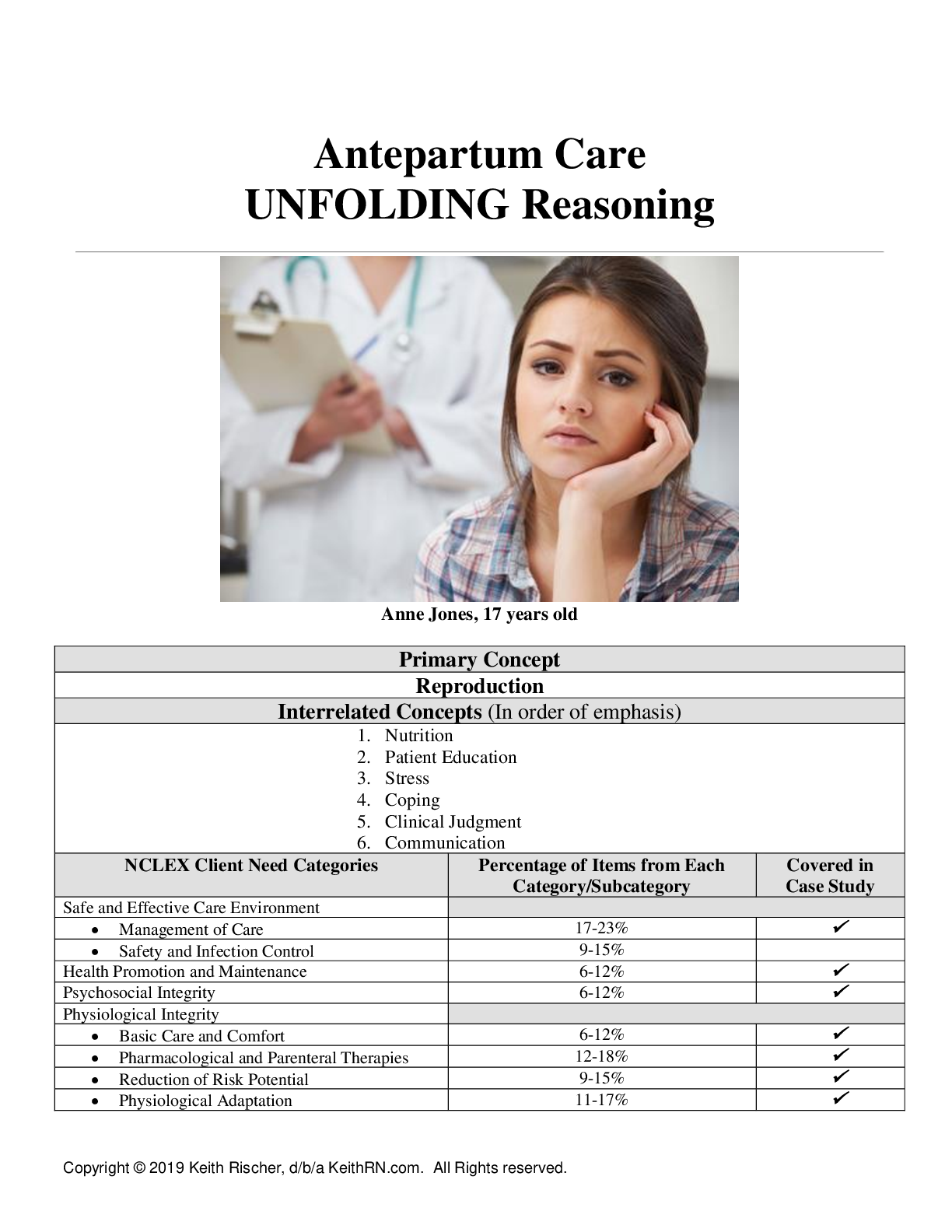
Buy this document to get the full access instantly
Instant Download Access after purchase
Add to cartInstant download
We Accept:

Reviews( 0 )
$8.00
Document information
Connected school, study & course
About the document
Uploaded On
Mar 29, 2021
Number of pages
8
Written in
Additional information
This document has been written for:
Uploaded
Mar 29, 2021
Downloads
0
Views
62

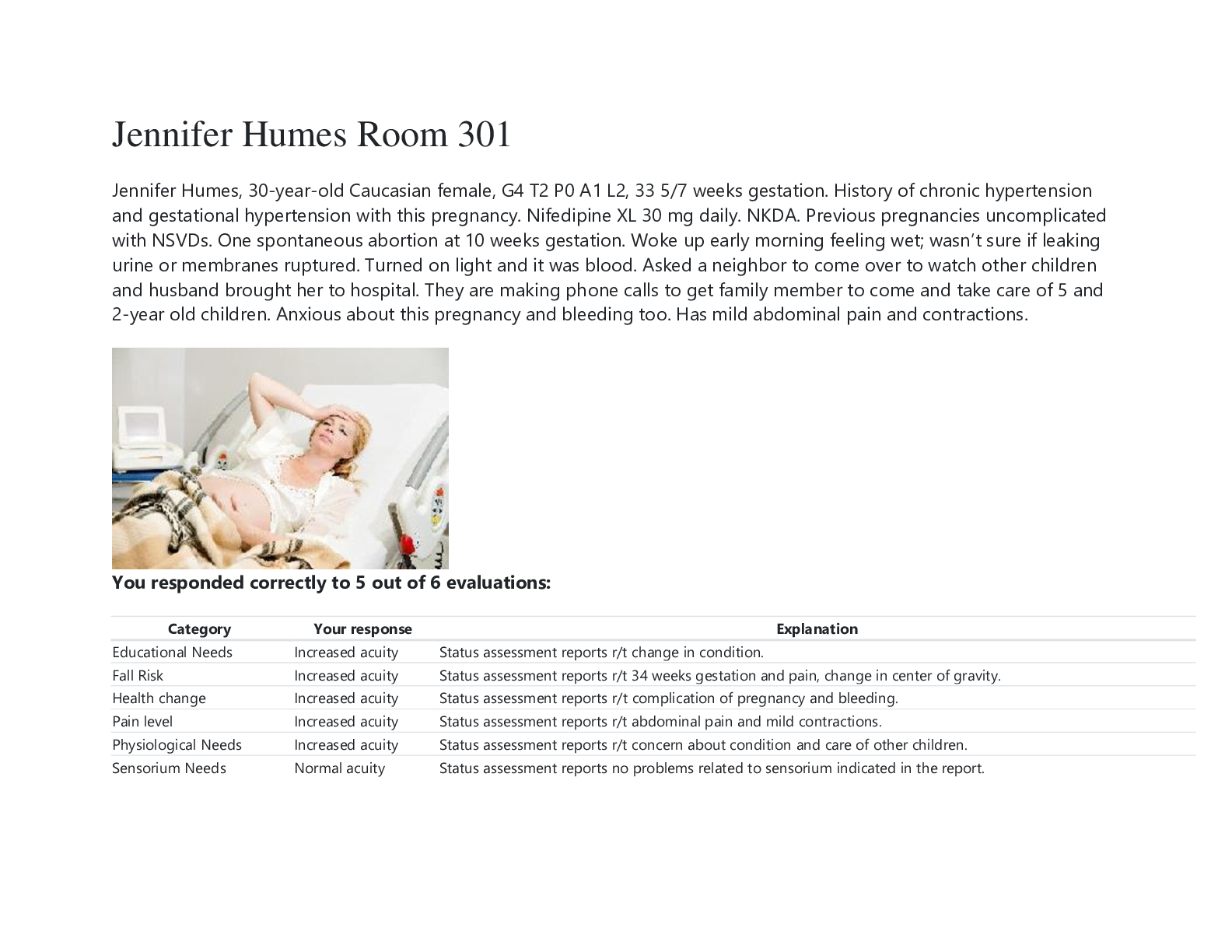



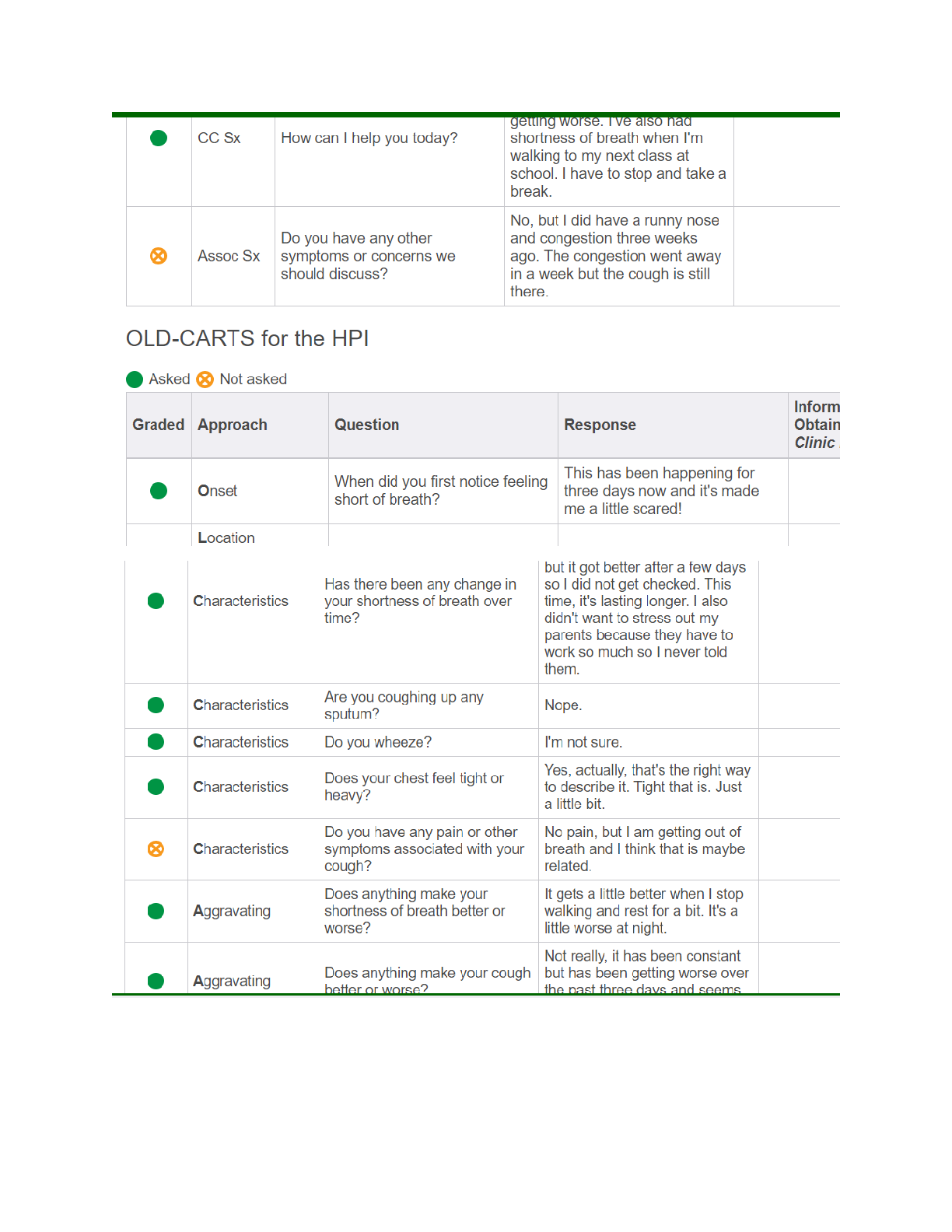
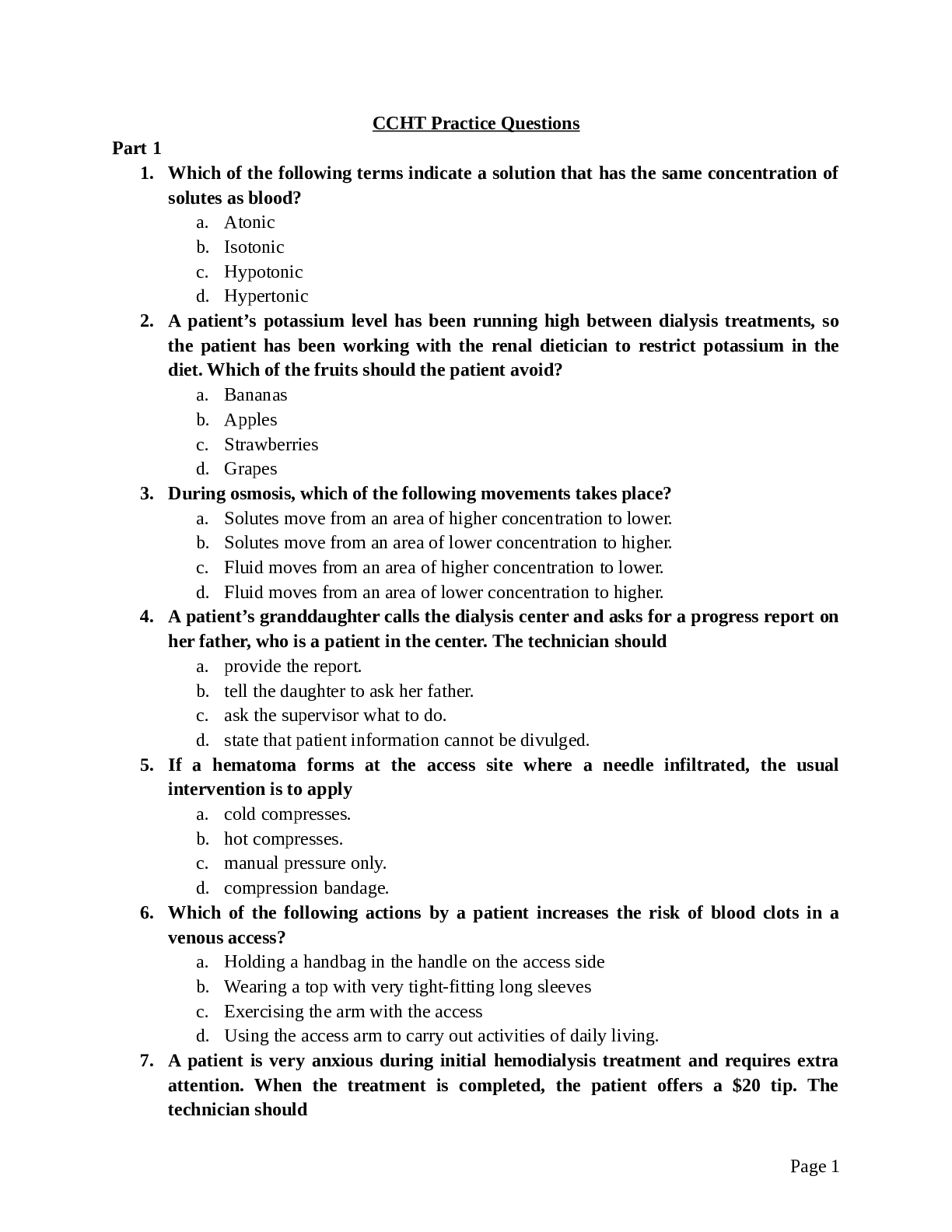

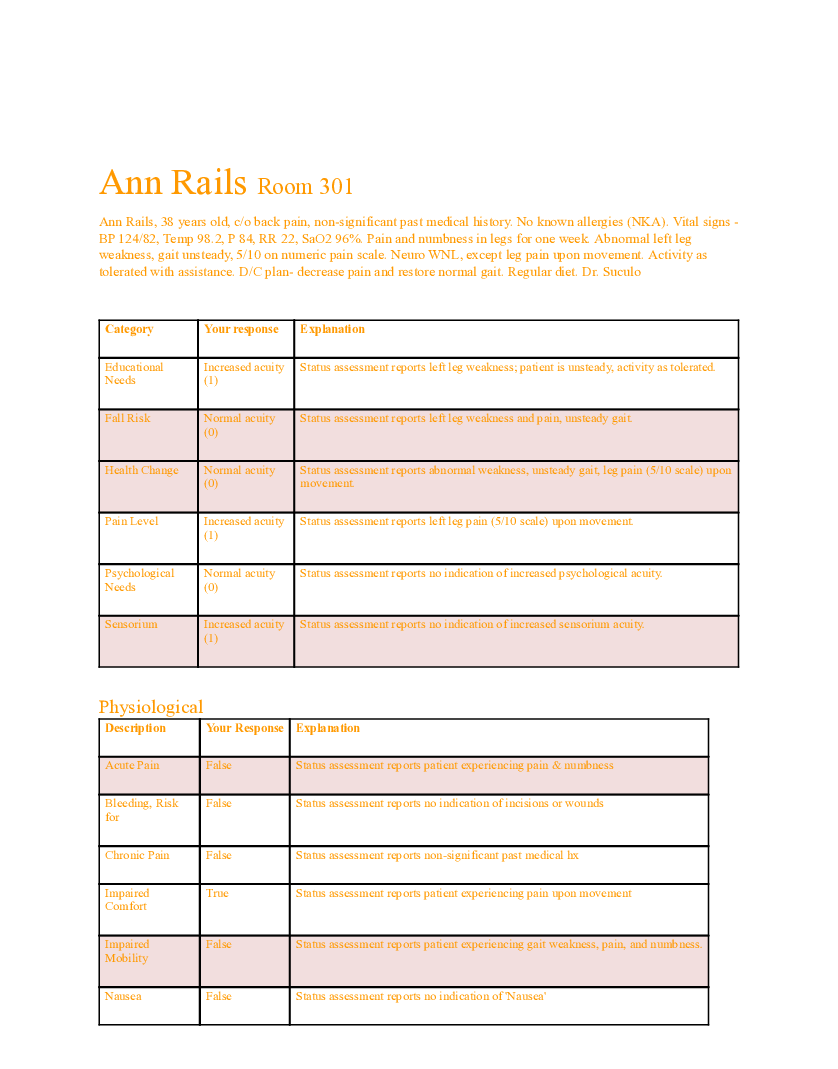
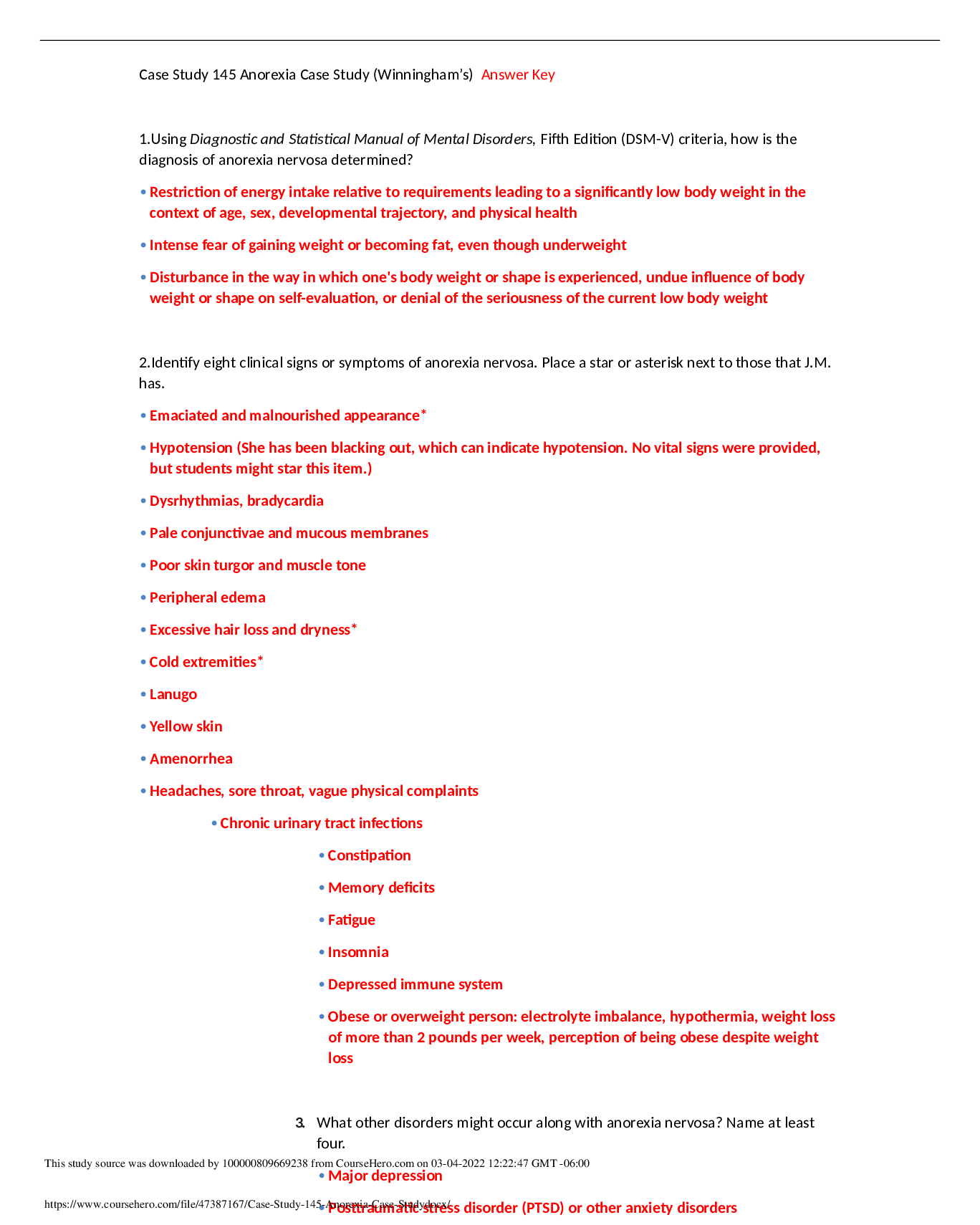





.png)

 - Keiser.png)
